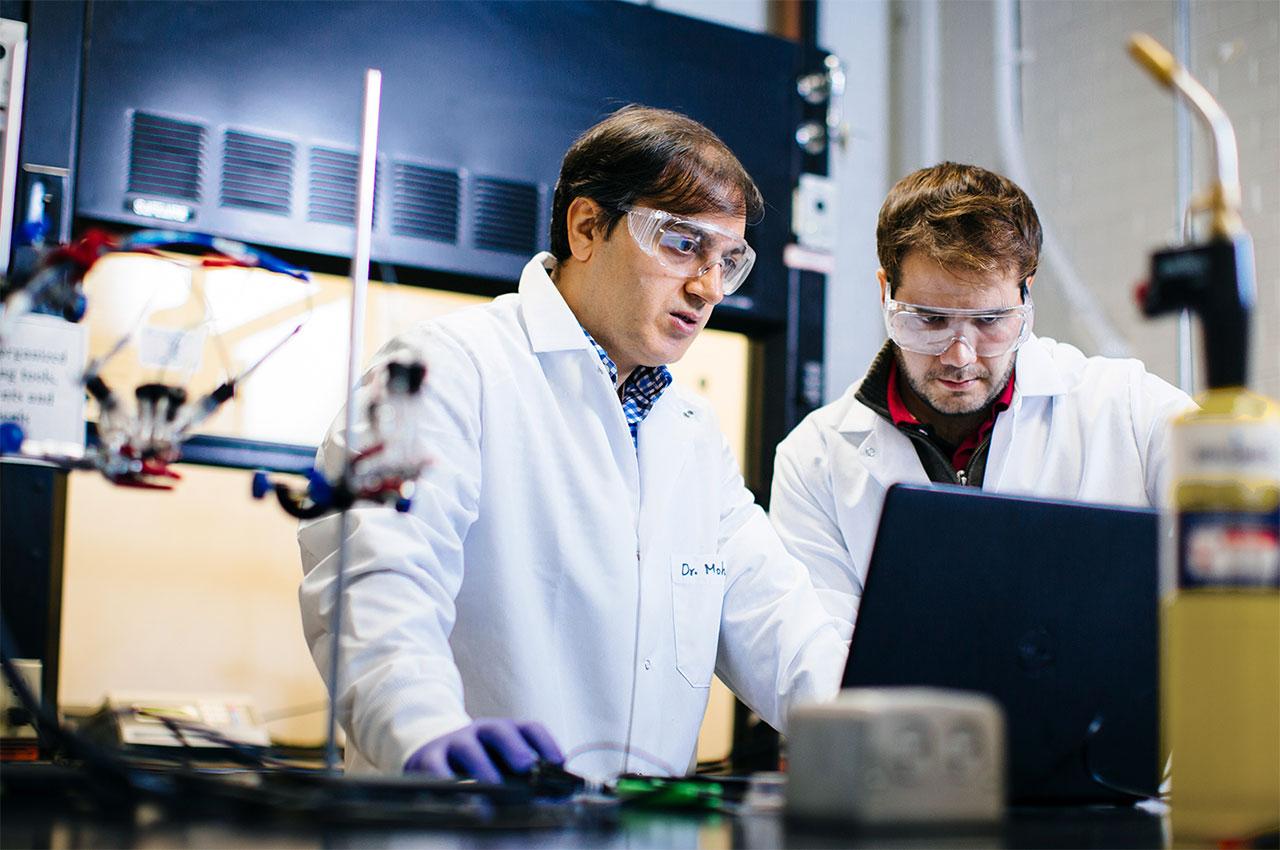Assistant Professor Publishes Research on Platinum-like Activity Electrocatalyst for Electrochemical Hydrogen Evolution

As global energy demands continue to grow and fossil fuels make up the majority of energy supplies, hydrogen fuel has emerged as an alternative energy source to sustainably meet the world’s ever-increasing energy needs due to its high energy density and zero carbon emissions.
Assistant Professor Mohammad Asadi in Armour College of Engineering’s Department of Chemical and Biological Engineering reveals a low-cost, earth-abundant alternative for hydrogen production in the Advanced Energy Materials journal article titled “Identifying Catalytic Active Sites of Tri-molybdenum Phosphide (Mo3P) for Electrochemical Hydrogen Evolution.”
While one way to produce hydrogen fuel is to electrochemically split water into hydrogen and oxygen, the process of breaking down water requires an efficient catalyst, which is a material that increases the rate of a chemical reaction. However, current catalysts such as platinum are scarce and expensive.
In this study, Asadi reveals tri-molybdenum as an alternative for hydrogen production and a suitable candidate for large-scale applications. Asadi began researching a new water-splitting catalyst in 2018 alongside doctoral students Alireza Kondori (CHBE Ph.D. student) and Mohammadreza Esmaeilirad (CHBE Ph.D. student), and in collaboration with Illinois Tech’s College of Science and the Lawrence Berkeley National Laboratory.
“We are trying to increase the contribution of renewable energy and decrease burning of fossil fuels, to avoid biproducts that are not sustainable for the environment,” explains Asadi.
Finding an inexpensive and highly active catalyst to replace precious metals is challenging for this technology. Asadi shares, “Our new material will be a perfect replacement for the platinum and is capable of making the process much more efficient and cost-effective.”
Asadi notes that hydrogen has one of the highest energy density values per mass and is considered an alternative fuel under the Energy Policy Act of 1992. For comparison, the energy stored in 1 kilogram of hydrogen gas is approximately equivalent to the energy found in 2.8 kilograms of gasoline.
“The important challenge in utilization of the hydrogen as a fuel is to efficiently extract it from compounds such as water, hydrocarbons, etc.,” says Kondori. Since hydrogen is a green, high-energy-density alternative for fossil fuels, Asadi highlights the importance of finding ways to overcome the low efficiency of hydrogen production and of generating unlimited access any time and any place.
“We are very excited about this new material and want to test it for other chemical and cathartic reactions. The next step will be to test this for other possible reactions such as carbon dioxide reduction and nitrogen fixation,” adds Asadi.




